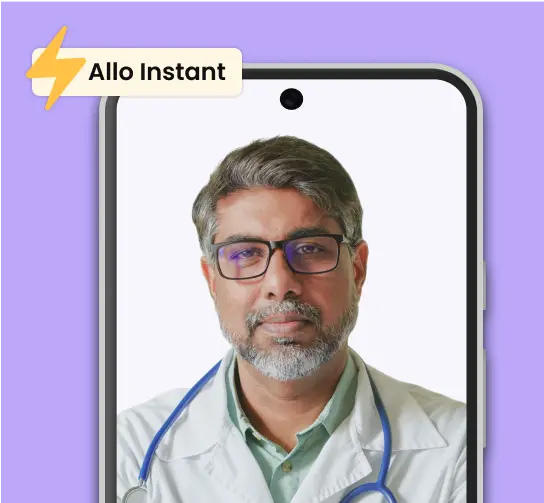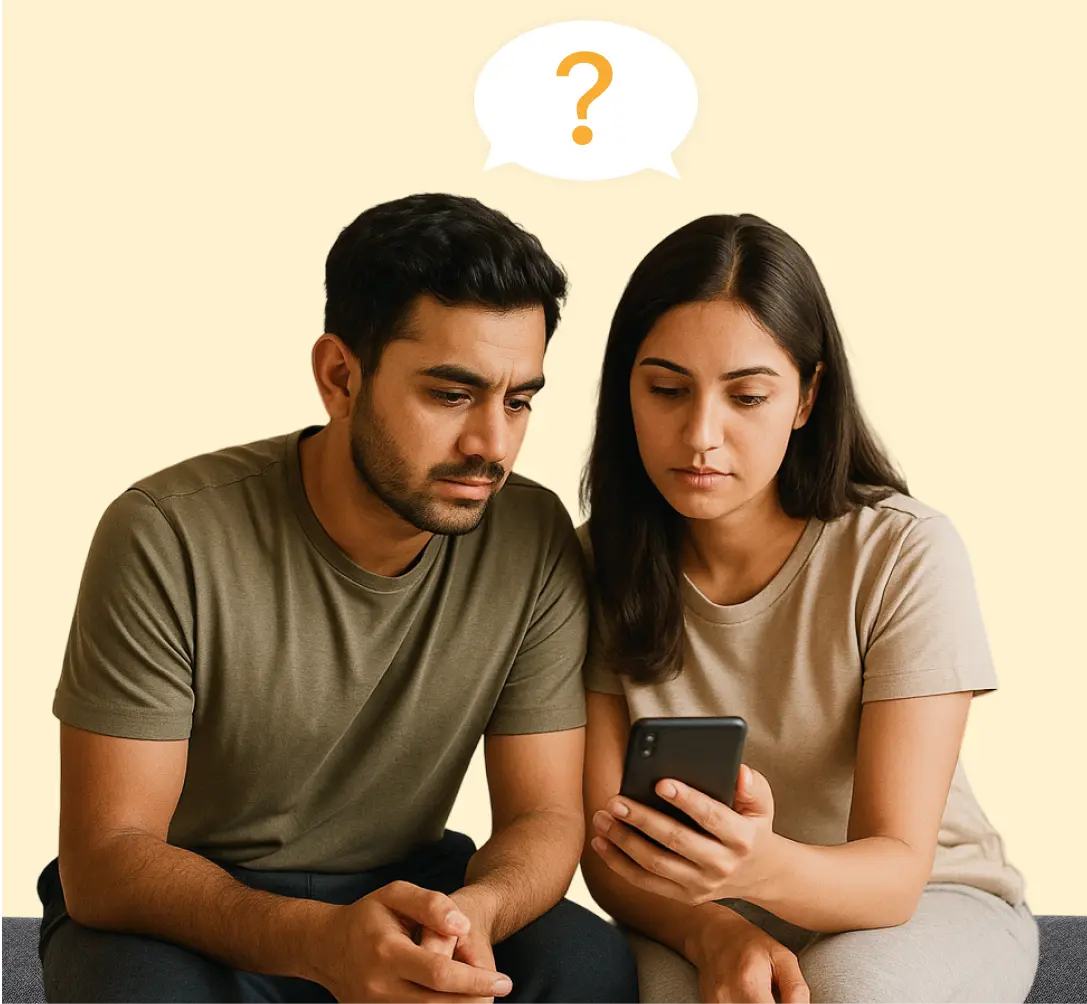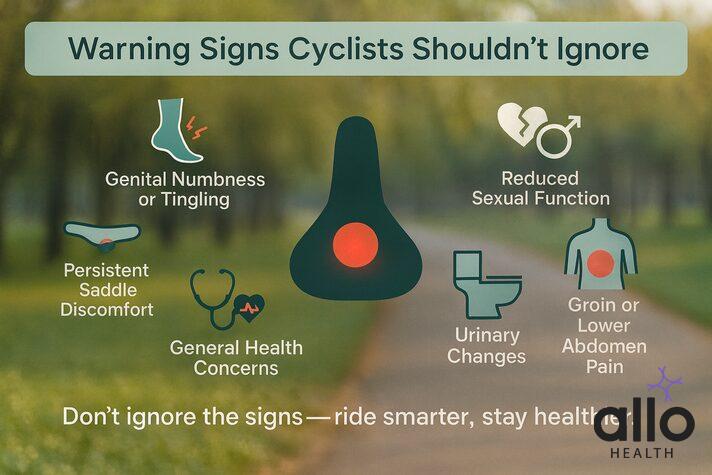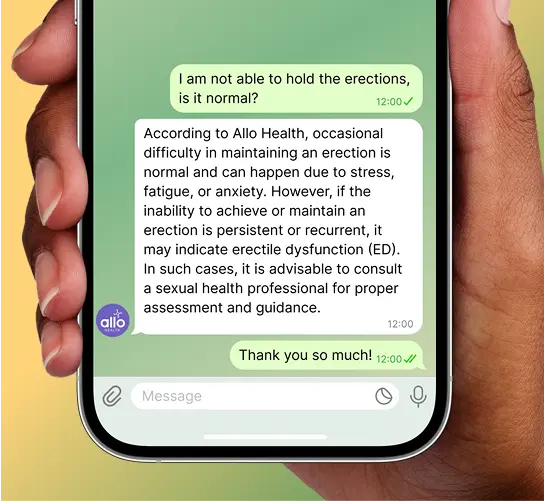How Cycling Impacts Erectile Dysfunction: Prevention and Saddle Safety
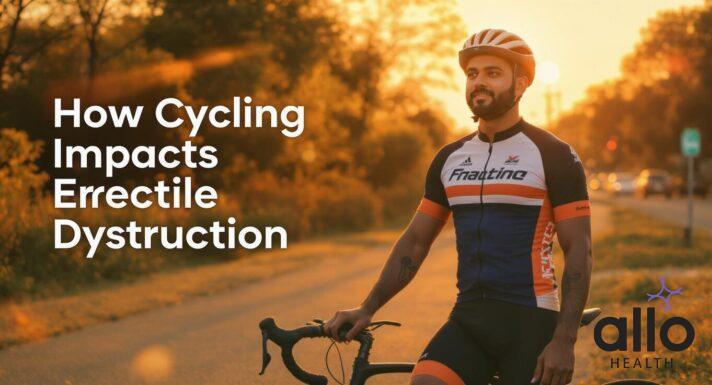
Yes, cycling can contribute to erectile dysfunction, with 13-24% of frequent cyclists reporting ED issues, but the right bike seat makes all the difference. Traditional narrow saddles can reduce oxygen supply to the penis by compressing crucial nerves and blood vessels in the perineum (area between the anus and penis). The safest bike seats for preventing ED include no-nose saddles, cut-out designs with central grooves, wider saddles that distribute weight across sit bones, and well-padded options. Research shows switching to protective saddles reduces perineal numbness and improves erectile function. Most cycling-related ED is temporary and reversible with proper saddle choice, regular breaks (stand every 10 minutes), correct bike positioning, and limiting rides to 3-5 hours weekly, so you don't have to give up this heart-healthy exercise to protect your sexual health.
Can cycling cause erectile dysfunction? It’s a question many men wonder about, especially if they spend long hours in the saddle. Research does show that long-distance riding, poor posture, or the wrong bike seat can sometimes put pressure on nerves and blood vessels in the groin, leading to problems like numbness or even erectile dysfunction.
In this article, we’ll explore how cycling affects erections, what warning signs to watch for, practical prevention tips, the best bike seats for protecting sexual health, and when it’s worth consulting a doctor.
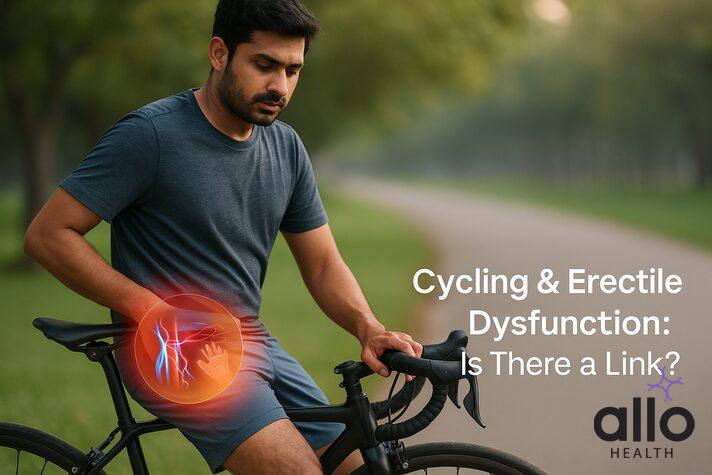
Is Cycling and Erectile Dysfunction Connected?
Yes, cycling can contribute to erectile dysfunction, but not in every case. In fact, cycling has plenty of health benefits: it strengthens your heart, lowers stress, and improves overall fitness, all of which support healthy erections. So, in most situations, the benefits of cycling outweigh the risks.
That said, research[1] has found that around 13–24% of frequent cyclists report erectile dysfunction. Some studies[2] show that men who cycle more occasionally may still face an increased risk, while those male riders who ride aggressively or at very high speeds often notice more pronounced symptoms. On the other hand, some studies[3] suggest no clear link at all between cycling and ED.
The bottom line? Cycling is generally good for your health, but it’s smart to be aware of the potential risks it may pose to erections. With the right saddle and riding habits, you can continue enjoying your rides while protecting your sexual health.
Cycling is good for overall health. But it is good to be aware of the potential risks cycling has on erections so that necessary precautions can be taken, while fully enjoying this sport. Let’s see how cycling and erectile dysfunction are related.
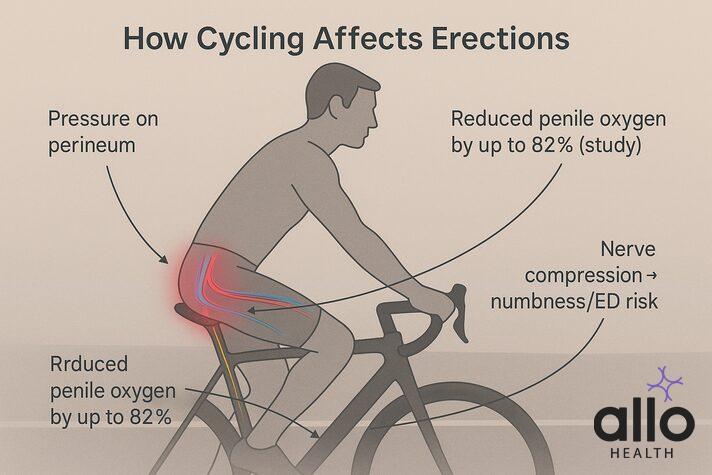
How Cycling Affects Erections
The main concern with cycling and sexual health comes down to pressure on the perineum, the small area between the anus and the penis. This region is packed with nerve endings and blood vessels that play a vital role in getting and maintaining erections.
When you spend long hours on a traditional narrow bike saddle seat, especially with poor posture, that pressure can build up. Over time, it may compress the pudendal nerve and the pudendal/perineal artery, both of which are crucial for healthy erectile function.
One study[4] found that traditional bicycle seat designs can reduce oxygen supply(penile oxygen pressure) to the penis by as much as 82.4%. Another reported that around 50–91% cyclists experience some degree of genital numbness(perineal numbness).
What does this mean in simple terms? Long-distance cycling, the wrong saddle design, or incorrect riding position can increase the risk of erection problems for some men. The good news is that with awareness and the right bicycle characteristics, these risks can often be minimized.
How Common Is Cycling-Related Erectile Dysfunction?
The Massachusetts Male Aging Study[5] shows that men who cycle more than three hours per week face a higher risk of erectile dysfunction.
The risk is generally greater for long-distance or frequent cyclists compared to casual riders. But, it’s not just about cycling time; factors like age, lifestyle habits (smoking, alcohol), and health conditions such as diabetes or heart disease also play an important role.
It’s also crucial to distinguish between temporary perineal numbness after a ride (which usually improves with rest) and long-term erectile dysfunction, which requires medical attention.
Most cycling-related erection issues are temporary and reversible. The key is catching the signs early and making small changes, like choosing a better saddle or standing up on the pedals more often.
6 ED Warning Signs Cyclists Shouldn’t Ignore
Cycling is generally safe, but your body gives you signals when something isn’t right. Paying attention to these early warnings can help you prevent long-term problems, including erectile dysfunction. Here are a few red flags to watch out for:
1. Genital Numbness or Tingling
If you notice perineal numbness, tingling, or pain in the groin during or after rides, it’s usually due to pressure on the perineum. Repeated episodes can interfere with nerves and blood flow.
2. Reduced Sexual Function
Struggling to maintain erections, feeling less aroused, or experiencing a loss of sensation are signs that circulation or nerve supply may be compromised.
3. Persistent Saddle Discomfort
Continuous soreness or chafing isn’t just uncomfortable; over time, it may cause inflammation, tissue injury, and raise ED risk.
4. Urinary Changes
Symptoms like a weak stream, frequent urination, or burning could point to perineal trauma, prostate irritation, or even infection.
5. Groin or Lower Abdomen Pain
Sharp or dull pain in these areas may be linked to saddle type or riding posture and often signals vascular or nerve stress.
6. General Health Concerns
Don’t ignore fatigue, chest pain, dizziness, palpitations, or breathlessness. These may point to underlying cardiovascular issues that need immediate medical attention.
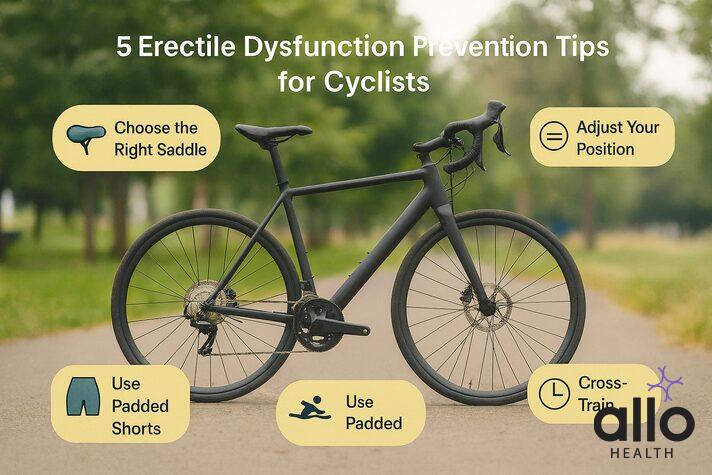
5 Erectile Dysfunction Prevention Tips for Cyclists
Cycling doesn’t have to come at the cost of your sexual health. With a few smart adjustments, you can keep enjoying the sport while protecting your erections.
1. Choose the Right Saddle
Your saddle design is the biggest factor. Look for ergonomic saddle designs and saddle shapes, such as cut-out or noseless saddles, that support your sit bones while easing pressure on sensitive soft tissue.
2. Adjust Your Position
A proper bike fit is just as important as the bike itself. Keep your bicycle saddles level with the ground and saddle inclination slightly downward to reduce pressure on the perineum.
Also, watch your handlebars: if they sit too high or too low compared to your saddle height, they can increase strain and the risk of ED.
3. Limit Time in the Saddle
Breaks matter more than most people realize. Standing up on your pedals every 10 minutes helps restore blood flow and oxygen flow to the penis.
For fitness, about 3-5 hours of cycling per week is great for heart health without pushing ED risk.
4. Use Padded Shorts
High-quality padded cycling shorts act like a cushion. They reduce friction and spread out pressure more evenly, making long rides safer and more comfortable.
5. Cross-Train
Balance is key. Mix in activities like swimming, jogging, or strength training. This not only keeps your fitness strong but also lowers the repeated stress cycling puts on your perineum.
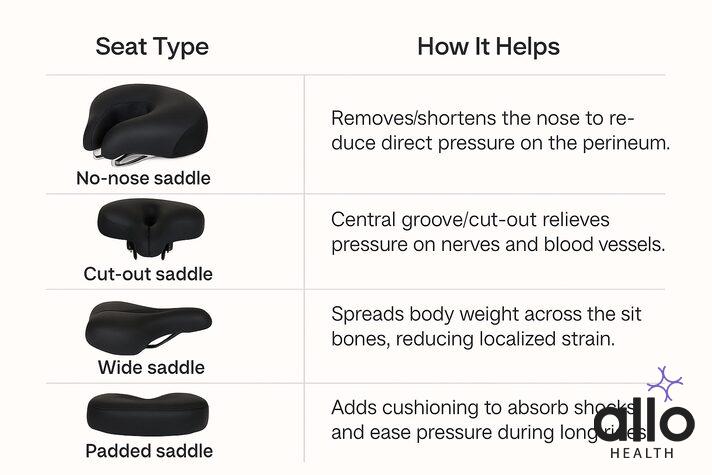
4 Best Bike Seats to Prevent Erectile Dysfunction
The right bike seat can make a world of difference. In fact, research[6] by the National Institute for Occupational Safety and Health (NIOSH) involving 90 bicycle police officers found that switching to protective bicycle saddles led to a 66% reduction in perineal numbness and pressure, and even showed significant improvements in erectile function scores.
Here are some seat types that are considered safer for sexual health:
1. No-nose saddles
These designs remove or shorten the saddle nose, reducing direct pressure on the perineum.
2. Cut-out saddles
A central cut-out or groove helps relieve pressure on sensitive nerves and blood vessels.
3. Wide saddles
Wider designs spread body weight more evenly across the sit bones, reducing strain on one area.
4. Padded saddles
Saddle padding adds extra cushioning, which absorbs shocks from the road and eases perineal pressure, especially during long rides.
With the right saddle design choice and proper bike fitting, you can enjoy all the cardiovascular and fitness benefits of cycling while protecting your erections and long-term sexual health.
When to See a Doctor
Most cases of cycling-related erectile dysfunction are temporary and reversible. With the right adjustments, many men notice improvement fairly quickly. But it’s important to consult a doctor if:
- ED symptoms continue even after you’ve changed your saddle or riding habits.
- You also have other health risks, such as diabetes, high blood pressure, or heart disease.
A healthcare professional can help rule out underlying conditions and guide you toward safe, effective solutions.
Conclusion
Cycling is one of the healthiest activities you can do; it supports your heart, reduces stress, and boosts overall fitness. The key is to ride in a way that also protects your sexual health.
With the right bike seat and smart riding habits, you don’t have to choose between fitness and intimacy. Don’t give up cycling, just ride smarter.
"The following blog article provides general information and insights on various topics. However, it is important to note that the information presented is not intended as professional advice in any specific field or area. The content of this blog is for general educational and informational purposes only.
Book consultation
The content should not be interpreted as endorsement, recommendation, or guarantee of any product, service, or information mentioned. Readers are solely responsible for the decisions and actions they take based on the information provided in this blog. It is essential to exercise individual judgment, critical thinking, and personal responsibility when applying or implementing any information or suggestions discussed in the blog."

